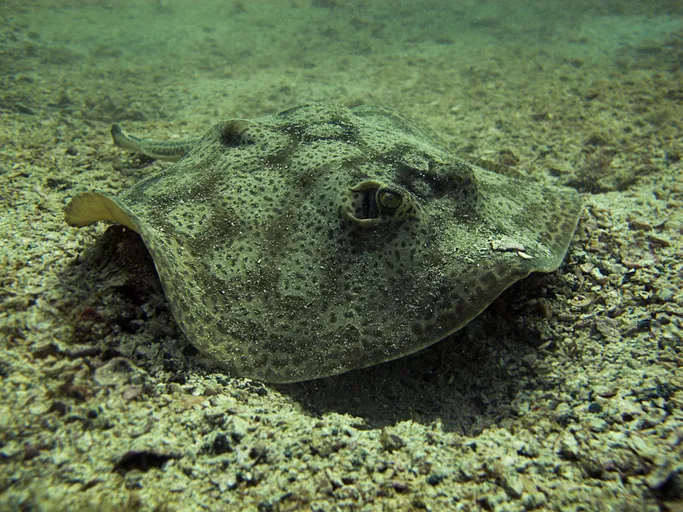The Aquarium & Shark Lab by Team ECCO recently caused a stir when they announced the pitter patter of tiny fins: Charlotte, their California round stingray, was pregnant with three or four pups even though she hasn't shared her tank with a male ray for eight years.
Rumours quickly spread. Could the father be Larry or Moe, the two white-spotted bamboo sharks sharing a tank with her? After all, the aquarium team had noticed bite marks on Charlotte. “Oh my gosh, sharks bite when they mate,” said Team ECCO’s Brenda Ramer while performing a live ultrasound on Charlotte.
Charlotte was pregnant with three or four pups even though she hasn't shared her tank with a male ray for eight years.
- Skate vs ray: what's the difference?
- Which animal has the longest pregnancy?
- How and why do male seahorses get pregnant?
This theory was quickly debunked by experts because, even though sharks and rays are closely related, their DNA is incompatible.
“They wouldn't be able to produce viable pups even if they could mate,” says stingray expert Dr Joni Pini-Fitzsimmons, research fellow at Charles Darwin University, Northern Territory. “We can be sure that Charlotte's sharky tank mates aren't the fathers and she won't be pupping any shark-ray hybrids.”

A 'virgin birth'
But the real story behind Charlotte's pregnancy is, perhaps, more fascinating. Experts at the aquarium believe Charlotte impregnated herself through a process called parthenogenesis. This rare form of asexual reproduction allows a female to create viable offspring without her eggs being fertilised and is, essentially, a virgin birth – the name comes from the Greek ‘parthénos’ (virgin) and ‘génesis’ (creation).
Pini-Fitzsimmons describes it as a 'last ditch effort' for females to pass on their genes when a male isn’t present. In the famous words of Jeff Goldblum’s character in Jurassic Park, she says: “life, uh, finds a way.”
Parthenogenesis is, essentially, a virgin birth – the name comes from the Greek ‘parthénos’ (virgin) and ‘génesis’ (creation).
Sharks and rays are the world’s most threatened groups of fishes but this unusual method of reproduction won’t be enough to maintain critically endangered species, she says. The only way to protect these important animals is putting in place comprehensive conservation efforts globally, such as habitat protection and sustainable fishing.
For now, the world is waiting for Charlotte’s very special new arrivals – this is the first time parthenogenesis has been recorded in this species. It may happen in the wild too but it’s much easier to observe in captive animals, says Pini-Fitzsimmons “because when a female ray has been alone for many years and suddenly gives birth, people tend to notice”.
Round stingray facts
A round stingray (Urobatis halleri) is a smallish stingray, usually measuring 20cm to 25cm in length, though they can grow as long as 55cm. They are grayish brown in colour, and can be either plain, mottled or spotted on top, with a pale yellow, orange or white underside.
The round stingray can be found in the eastern Pacific Ocean, most abundantly south of Point Conception in California. They feed on invertebrates such as stomatopods, shrimp and crabs.
After a gestation period of approximately three months, round rays may give birth to up to six young (Charlotte is expected to have three or four young), with each newborn measuring up to 8cm wide.
- There’s a fish in Tasmania with hands instead of fins, and scientists are about to save it from extinction
- Blue whales return to the sanctuary of Seychelles
- Is there really no such thing as a fish?
Main image: round stingray in an aquarium (not Charlotte). Credit: Getty